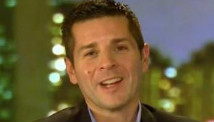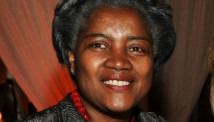STORY HIGHLIGHTS
- Dean Obeidallah would love an Oscar, but thinks they mostly don't matter in long run
- He says telecast not the draw it once was, and winning doesn't mean bigger box office
- He says for stars win often doesn't mean work; award season makes Oscars anticlimatic
- Obeidallah: Why not give Oscar awards first, then follow with smaller awards later?
Editor's note: Dean Obeidallah, a former attorney, is a political comedian and frequent commentator on various TV networks including CNN. He is the editor of the politics blog "The Dean's Report" and co-director of the upcoming documentary, "The Muslims Are Coming!" Follow him on Twitter: @deanofcomedy.
(CNN) -- If I won an Oscar, I'd carry it around it with me everywhere. I'd start every conversation with, "Well, as an Oscar winner..." I'd wear a pin that says, "Ask me about my Oscar." I might even get a tattoo on my neck of the golden figurine.
But that's just me. Because beyond the personal thrill of winning, the Oscars don't matter. The golden statue is increasingly becoming nothing more than a shiny paperweight.

Dean Obeidallah
And I say this as someone who loves movies, appreciates the talented people who make them and has long watched the awards show. But in three categories the Academy Awards have lost their luster: the TV telecast, the box office impact of the awards on movies and their effect on people's acting careers.
Are viewers particularly interested in watching the Oscars? Not so much. TV ratings show pretty clearly that percentage of people watching the Academy Awards has trended downward over the years. For example, in 2000, nearly 47% of the people watching TV on Oscar night watched the Academy Awards. It has not been that high since, and in 2012, the number had fallen to 34%. In fact, the 2012 Grammy awards had higher overall ratings than that year's Oscar telecast.
Why? There's almost no surprise left. Viewers have a fairly good idea of who will win every big award after the parade of award shows that queue up in the weeks before the Oscars. There are so many! The Golden Globes, Screen Actors Guild, Director's Guild, Producers Guild, the guys who run the deli by my apartment award show, etc. Oscar night feels more like a coronation than an actual awards show.
The only Oscar surprise this year -- and it's not one that will help the TV ratings -- is the Academy voters' bizarre snub of Ben Affleck for a Best Director nomination for his film "Argo." Affleck won Best Director honors at this year's Golden Globes, as well as at the Director's Guild, SAG and Producer's Guild awards. He even won the best director prize at the British Academy Awards. Apparently, the Academy voters still won't forgive Affleck for the stinker "Gigli."
Bergen: 'Zero Dark Thirty': Did torture really net bin Laden?
In the category of how much does an Oscar help your film at the box office, the envelope says: Not much. Sure, there's an "Oscar bump," but look at the 2009 Best Picture winner, "The Hurt Locker." It ended up grossing only $17 million in the United States. Keep in mind that $100 million in domestic box office receipts is generally considered a hit. $17 million is a bomb.
Also last year's Oscar winner for Best Picture, "The Artist," ended up earning approximately $45 million in U.S. theaters. No boffo hit there.
Cullen: With 'Lincoln', a new frontier for Day-Lewis
And here's something that the Academy Awards hate to hear: Winning a Golden Globe has proven to be much more profitable for a movie than winning an Oscar. That is at least according to a recent analysis that looked at award-wining films over the past 12 years. Edmund Helmer, a statistician whose website, BoxOfficeQuant.com, analyzes film industry statistics found that movies that won an Academy Award had on average a $3 million bump in box office sales. However, Golden Globe winners saw on average a pop of $14 million. Pretty big dollar difference.
And in the category of how much does an Oscar help your acting career, there's no denying it can help. But Oscar gold doesn't always translate into personal gold. Many talented actors and actress have won this coveted award only to find themselves with little film work a few years later. I'm talking Oscar winners like Mira Sorvino, Joe Pesci, Louis Gossett Jr. and Kim Basinger.
Williams: Django, in chains
Perhaps the most glaring example of this is actress/comedian Mo'Nique, who won the 2009 Best Supporting Actress award for her role in "Precious." According to the Internet Movie Date Base (IMDb), her only movie since her Oscar triumph went straight to video.
Conversely, there's a long list of amazingly talented actors and actresses who have yet to win an Oscar. A partial list includes Leonardo DiCaprio, Julianne Moore, Tom Cruise, Gary Oldman, Johnny Depp and Annette Benning.
Obviously, Academy Awards organizers have little impact on some of these issues. But one change they can consider is moving the Oscars up to take place before the other award shows -- like states in the presidential primaries. At least then the Academy Awards will provide real drama as to winners and losers.
Despite knowing the likely winners, I'm still looking forward to watching Sunday's Oscars. This year's host is the very funny Seth Macfarlane. Although I think the funniest moment of the awards' show may be when Russell Crowe sings a song from "Les Misérables."
Follow us on Twitter @CNNOpinion.
Join us on Facebook/CNNOpinion.
The opinions expressed in this commentary are solely those of Dean Obeidallah.












